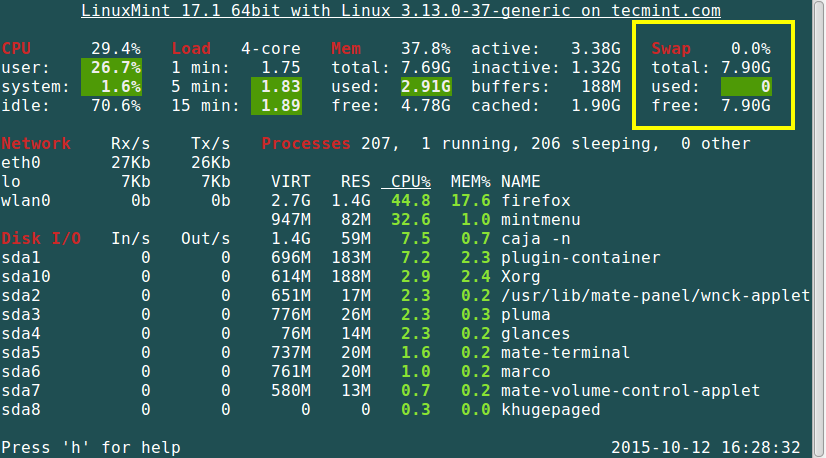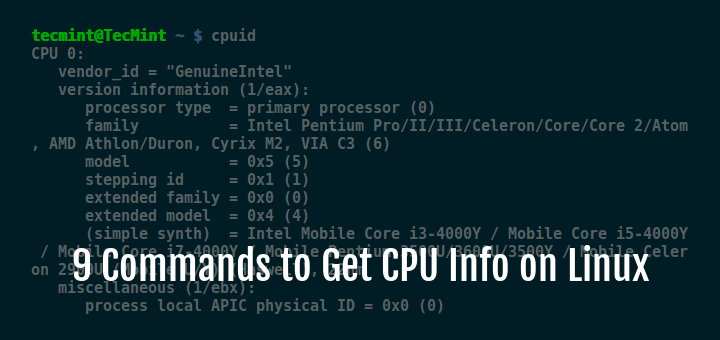- Linux How To Check Memory
- Linux Check Memory Size
- Linux Memory Check
- Linux Check Memory Info
- Linux Check Free Memory
Jun 27, 2019 How to check memory usage on Linux Ubuntu. Install and use Smem memory reporting tool to show Memory usage on Linux Ubutnu systems. Smem is a commandline tool to check memory usage in Linux, per process, in percentage or in charts. Smem is a tool that can give numerous reports on memory usage on Linux systems. Apr 22, 2013 I googled a lot but I can only find Windows tools, nothing for Linux. I need: - total number of memory slots on the mainboard. for each used slot: current module type, memory type, size and speed. So I can make a shopping list for all the different needed memory modules. Sep 19, 2017 First command is free. This is simplest command to check your physical memory. This command is mainly used for checking RAM and SWAP on system. Using different switch you can change the byte-format of output.
When a user wants to add or upgrade memory (RAM) in a computer, they need to know how many memory slots are available. The following section will help you to determine the number of memory slots in your computer, as well as how many are currently being used.
Windows Task Manager
The easiest solution for Windows users is to open the Windows Task Manager.
- Press the Windows key, type Task Manager, and then press Enter.
- In the window that appears, click the Performance tab (A), then select Memory (B).
- In the lower-right corner, the number of slots is displayed in the Slots used: section (C).

Linux How To Check Memory
- As you can see, this computer has a total of four memory slots, although only two are currently being utilized.
Use the CPU-Z utility
Another way to get information about memory slots and details about the RAM currently installed on your computer, is to use the free CPU-Z third-party utility.
Linux Check Memory Size
- Open an Internet browser and visit the CPUID website.
- On the left side of the screen, select your operating system.
- On the next page, select your preferred language.
- On the next screen, click the DOWNLOAD NOW! button.
- Once the download has finished, install it from your browser and open the program.
- Click the SPD tab at the top of the screen, and then click the down arrow in the Memory Slot Selection section.
- As you can see in the image above, all of the memory slots (in this case, four) are listed in the drop-down menu.
 Tip
TipIf you select a different slot from the drop-down menu, CPU-Z will tell you additional information about the RAM that is installed, or nothing if the slot is unoccupied.
Examine the motherboard
Sometimes the best way to determine the available memory slots is to open the computer and examine the motherboard. Opening the computer is the best option if were unable to get the Windows Task Manager or CPU-Z to work.
Looking inside the case, the motherboard is the primary large circuit board. On most motherboards, the memory slots are located on either side of the CPU, and resemble what is shown below.
Most computer motherboards have two, three, or four memory slots. Some higher-end motherboards have as many as eight. The motherboard in the picture above has no memory modules installed in any of its three slots.
Linux Memory Check
NoteLinux Check Memory Info
If your computer has no memory slots available and you want to upgrade, you must remove and replace some of the existing memory.
Additional information
Linux Check Free Memory
- See our memory definition for further information and related links.